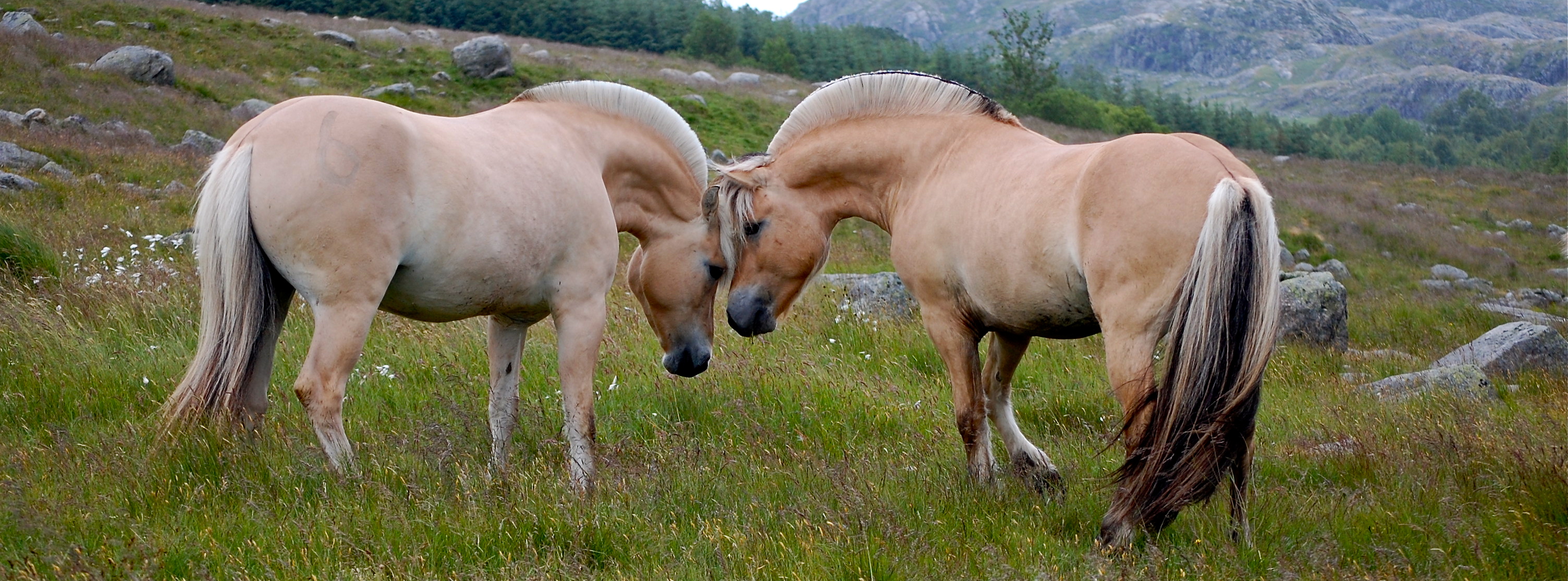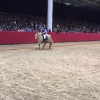Referring to the previous article "2021 Stallion Show in Nordfjordeid", below information about the performance test :
In breeding, the selection of stallions is very important as they have the greatest influence on the breed as they can sire many foals. The selection of stallions is built on a thorough judging of the individual stallion (kåring). This leads to the best possible breeding stock based on the properties desired, as stated in the breeding plan.
Before they can be licensed or awarded a premium, a performance test is compulsory for the Fjord horse. This also applies to several other breeds.
The results of the performance tests count for 10% of the overall assessment made by the official judges panel.
It is important that you, the exhibitor, read the rules and guidelines in the Breeding Plan, (https://fjordhest.net/blogg/wp-content/uploads/2021/02/Avlsplan-fjordhest-med-godkjente-endringer.pdf) for performance testing, so you understand what is expected .The general performance test rules are to be found in attachment 6 and a description of the further test (UB) in attachment 7
(Click here to find the english translation of the Norwegian Breeding Plan, by Susan Hellum, October 2014)
To make the elements in both tests easier to understand, NFL (the Fjordhorse Society) has made two films:
The first film shows the various elements of the driven test taken by stallions, the first time they come forward for evaluation and for mares, the first time they are shown as adults.
VIDEO HERE
You can see from the rules, that the reason for performance tests is to show the horse`s movement under work, to show that the horse is properly trained, is obedient and willing. Apart from judging the various elements, marks are given for suppleness, cooperation and forward movement. Marks are also given for behaviour.
The second film shows the second performance test (UB) that has to be completed a year later, by the approved stallions, at the stallion show, before they can be awarded a premium for further breeding purposes.
VIDEO HERE
The same reasons that the stallions were shown for the first time, apply to the riding and driving sections of the second performance test (UB) to be judged on gaits, forward movement, balance, rhythm, willingness and obedience.
How do we judge the test?
Overall picture.
The horse is to be shown in as free a form as possible, both under saddle and driven, but with contact. The horse should be straight in relation to the track it is on. During the whole test the horse`s balance, self-carriage, forward movement, willingness and suppleness are judged. Movement, gaits, are judged in relation to rhythm, length of stride, use of joints and whether they are free, active and show extension that is natural for the breed.
Technical elements
Here follows a description of the ideal way a test should be done. The horse will be judged in relation to how close the horse`s performance is to an ideal test.
Test on a slope: the test takes place on a suitable slope where the judge can observe the horse on the way up and on the way down. Prior to the test all the participants are shown where to drive. The horse is to show suitable forward movement and will be asked by the judge to halt, often half way up the slope. The horse must stand quietly for about 5 seconds and the same procedure is repeated on the way down the slope. After the halt the start must maintain the same rhythm and calmness as the horse had before the halt. After making a halt it is quite acceptable for the horse to take a step to find his balance.
Backing: The horse should go into halt with good forward movement and backing when the judge asks for four steps back, maintaining good rhythm and forward impulsion.
Figure of eight: The horse should at walk, make a figure of eight with 5 metres diameter from the cart`s inside wheel, on both hands. The horse should maintain good rhythm and impulsion, crossing the hind legs if necessary, yielding to the inside.











